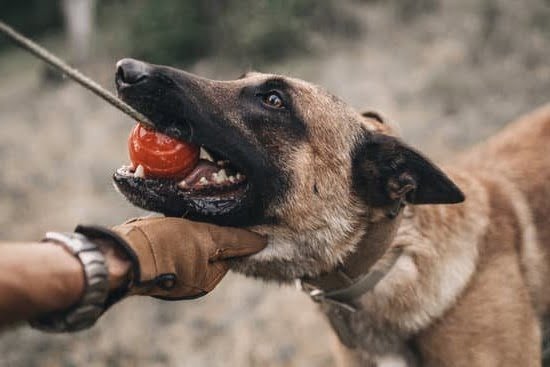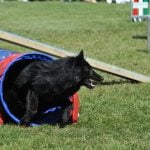How do you train a herding dog? Understanding the nature of herding dogs is the first step to effectively training and caring for these unique and talented animals. Herding dogs possess strong instincts and energy levels that require specific training methods and handling techniques. In this article, we will explore the key elements of training a herding dog, from establishing trust and respect to teaching herding commands and cues, as well as troubleshooting common challenges in their training.
Herding dogs have been bred for generations to work closely with humans and other animals, using their intelligence, agility, and natural instinct to control the movement of livestock. These qualities make them highly trainable but also come with their own set of challenges. By understanding the breed-specific traits and tendencies of herding dogs, you can tailor your training approach to meet their unique needs while ensuring a successful training experience.
Choosing the right training method for herding dogs is crucial in helping them develop into well-rounded, obedient, and happy companions. Each aspect of their training – whether it’s basic obedience or advanced commands – should be approached with consideration for their natural abilities and inclinations. This article will provide insights into managing the energy and instincts of herding dogs, socialization strategies, and the importance of mental stimulation in their overall development.
Choosing the Right Training Method for Herding Dogs
When it comes to training herding dogs, it is important to choose the right training method that aligns with their natural instincts and behavior. Here are some key considerations when selecting a training approach for herding dogs:
- Positive Reinforcement: Utilizing positive reinforcement techniques such as treats, praise, and toys can be highly effective in training herding dogs. This method focuses on rewarding desired behaviors, making the training experience enjoyable for the dog.
- Clicker Training: Clicker training involves using a clicker to mark the exact moment a dog performs a desired behavior, followed by a reward. This precise communication method can help clarify expectations for herding dogs during training sessions.
- Operant Conditioning: Herding dogs respond well to operant conditioning, which involves shaping and molding their behavior through positive and negative reinforcements. By understanding the principles of operant conditioning, trainers can effectively shape the actions of herding dogs.
It is important to keep in mind that each herding dog may respond differently to various training methods. Therefore, it is advisable to observe your dog’s reactions and adjust the training approach accordingly. Additionally, seeking guidance from professional trainers or experienced handlers can provide valuable insights into choosing the most suitable training method for your herding dog.
Ultimately, selecting an appropriate training method that takes into account the unique characteristics of herding dogs can lay a strong foundation for successful obedience and herding skills development. By choosing a method that complements their natural instincts and intelligence, you can establish a harmonious bond with your herding dog while nurturing their innate talents.
Establishing Trust and Respect With Your Herding Dog
Herding dogs are known for their intelligence, loyalty, and strong work ethic. In order to effectively train a herding dog, it is essential to establish a strong foundation of trust and respect. These dogs are highly responsive to their owner’s commands and thrive on praise and positive reinforcement.
When training a herding dog, it is important to build a strong bond based on trust. This can be achieved by spending quality time with your dog, providing consistent training, and being patient and understanding. Building trust with your herding dog will create a solid rapport that is essential for successful training.
Respect is another crucial element when working with herding dogs. These intelligent animals respond best to confident, calm leadership. It is important for owners to establish themselves as the pack leader in order to gain the respect of their herding dog. Consistent discipline and clear boundaries will help your dog understand its place within the family dynamic.
To establish trust and respect with your herding dog:
- Spend quality time bonding with your dog through activities such as playtime, walks, or training sessions.
- Consistently enforce rules and boundaries in a firm but fair manner.
- Provide plenty of positive reinforcement through treats, praise, and affection when your dog responds correctly during training sessions.
Overall, building trust and respect with your herding dog will not only strengthen your relationship but also enhance the effectiveness of training efforts.
Basic Obedience Training for Herding Dogs
Basic obedience training is an essential part of the development of any dog, especially herding dogs. This type of training focuses on teaching the fundamental commands such as sit, stay, come, and down. These commands are crucial for controlling and managing your herding dog’s behavior, whether in a home environment or out in the field. It is important to start this training as early as possible to establish a strong foundation for further training.
When it comes to basic obedience training for herding dogs, positive reinforcement methods are highly effective. Using treats, praise, and rewards to encourage desired behaviors will help your herding dog understand what is expected of them. Consistency and patience are also key factors in successful basic obedience training. Herding dogs are intelligent animals and will respond well to clear communication and repetition.
In addition to traditional obedience commands, leash training is an important aspect of basic obedience for herding dogs. Proper leash manners will ensure that you have control over your dog in various situations, whether at home or in public spaces. By incorporating leash training into basic obedience work, you can effectively manage your herding dog’s natural instincts while providing a safe and enjoyable experience for both you and your pet.
Advanced Obedience Training for Herding Dogs
Advanced obedience training is crucial for herding dogs to ensure they can effectively and efficiently work in the field. This type of training goes beyond basic commands such as sit, stay, and come, and focuses on more complex tasks that are essential for herding activities. Advanced obedience training not only helps in enhancing the working ability of herding dogs, but also strengthens the bond between the dog and its handler.
One key aspect of advanced obedience training for herding dogs is teaching them to respond to hand signals or whistle commands. Since herding dogs often work at a distance from their handlers, it is important for them to understand and obey non-verbal cues. This type of training requires patience, consistency, and a deep understanding of the breed’s natural instincts and behavior.
Another important component of advanced obedience training is teaching herding dogs to perform specific tasks such as moving livestock in a controlled manner, responding to directional cues, and making quick decisions based on changing situations. This level of training requires dedication from the handler and a keen understanding of the dog’s individual strengths and weaknesses. Additionally, incorporating mental stimulation activities into advanced obedience training can help keep herding dogs engaged and focused on their tasks.
According to experts in dog behavior and training, advanced obedience training for herding dogs should be tailored to each individual dog’s temperament, energy level, and breed characteristics. It is essential to provide regular opportunities for practice in various environments to ensure that the dog can perform reliably regardless of distractions or challenges. Overall, advanced obedience training plays a vital role in shaping herding dogs into skilled and valuable working partners.
| Aspect | Description |
|---|---|
| Non-verbal commands | Teaching response to hand signals or whistle commands |
| Specific tasks | Training them to move livestock in a controlled manner along with responding to directional cues |
| Mental stimulation activities | Incorporating activities that keep herding dogs engaged during advanced obedience training |
Teaching Herding Commands and Cues
Understanding the Importance of Herding Commands
Herding dogs are known for their natural ability to control the movement of other animals, whether it’s sheep, cattle, or any other herd. Teaching herding commands and cues is essential for these dogs to effectively perform their job. Without proper commands and cues, herding dogs may struggle to understand what is expected of them and could have difficulty working with livestock.
Introducing Basic Herding Commands
One of the fundamental commands for herding dogs is the “come bye” command, which instructs the dog to move clockwise around the herd. Another important command is “away to me,” which directs the dog to move counterclockwise around the herd. It’s crucial for trainers to introduce these basic herding commands in a clear and consistent manner to ensure that the dog understands their meaning and can execute them confidently.
Progressing to Advanced Herding Cues
As herding dogs become proficient in responding to basic commands, trainers can gradually introduce more advanced cues that further refine their herding skills. These advanced cues may include subtle body movements, whistles, or verbal signals that indicate specific actions or adjustments in guiding the herd. It’s important for trainers to be patient and provide ample practice opportunities for herding dogs to master these advanced cues effectively.
By teaching herding commands and cues in a systematic and patient manner, trainers can help herding dogs develop strong communication skills essential for working efficiently with livestock. This training process also fosters a deeper bond between the dog and trainer, as it requires trust, cooperation, and understanding on both ends.
Socialization and Exposure for Herding Dogs
Socialization and exposure are crucial aspects of training for herding dogs. These dogs have strong instincts and can be prone to anxiety or fearfulness if they are not properly socialized at an early age. It is important to introduce your herding dog to a wide variety of people, animals, sounds, and environments to ensure that they grow up to be well-adjusted and confident.
Early Socialization
Early socialization for herding dogs should begin as soon as you bring them home. Expose them to different places, surfaces, and experiences while ensuring that the encounters are positive and not overwhelming. This can include walks in the park, visits to the beach, meeting other friendly dogs, or simply spending time in your local village or town.
Positive Exposure
When exposing your herding dog to new experiences, it’s important to keep the encounters positive. Use treats, toys, and praise to create a positive association with different environments and situations. This will help your dog feel more comfortable and secure when faced with new experiences in the future.
By focusing on socialization and exposure during training, you can help your herding dog become a well-rounded and confident companion. This aspect of training is essential for ensuring that your dog can adapt to various situations while remaining calm and collected-a vital quality for any herding dog.
Managing the Energy and Instincts of Herding Dogs
Herding dogs are known for their high energy levels and strong instincts. To effectively train these dogs, it is important to properly manage their energy and instincts. One way to do this is by providing ample physical exercise. Herding dogs need regular, vigorous exercise to keep them physically and mentally stimulated. Daily walks, runs, or playtime in a large, fenced-in area can help fulfill their energy needs and prevent boredom.
In addition to physical exercise, mental stimulation is also crucial for herding dogs. These intelligent breeds thrive on having a job to do. Engaging them in activities such as agility training, nose work, or advanced obedience exercises can help keep their minds sharp and prevent destructive behaviors that may arise from boredom.
It is also vital to provide outlets for their natural herding instincts. This can be achieved through activities like herding trials or introducing them to activities where they can use their innate abilities in a controlled environment. However, it’s important to ensure that any herding activities are done safely and responsibly under the guidance of experienced trainers to avoid any potential harm to other animals or people.
Finally, consistent training routines and clear expectations will help manage the energy and instincts of herding dogs. Establishing a predictable schedule for training sessions and consistently reinforcing good behavior will provide structure for these working dogs and help them channel their energy in positive ways.
| Energy Management | Instinct Management |
|---|---|
| Regular exercise | Mental stimulation |
| Engagement in herding activities | Consistent training routines |
Troubleshooting Common Challenges in Training Herding Dogs
Training a herding dog can come with its own set of challenges, but with the right approach and understanding, these challenges can be effectively addressed. Common challenges that may arise during the training process include over-excitement, stubbornness, and difficulty in maintaining focus. It’s important for owners to be patient and consistent in their training methods when dealing with these challenges.
One common challenge when training herding dogs is their tendency to become overly excited, which can lead to difficulties in maintaining focus and following commands. To address this, it’s important to incorporate consistent practice of calming exercises, such as teaching your dog to settle on command. By providing structured exercise and incorporating mental stimulation into their routine, you can help manage their energy levels and prevent them from becoming overly excited during training sessions.
Another common challenge is stubbornness, which may lead to resistance in following commands. Herding dogs are known for their independent nature, so it’s crucial to establish clear leadership and remain firm in enforcing boundaries during training. Positive reinforcement techniques paired with consistency will help in overcoming their stubborn tendencies and encourage them to respond obediently to commands.
Furthermore, difficulty in maintaining focus can also present a challenge during training. To address this, incorporating short but frequent training sessions along with mental stimulation activities throughout the day can help improve their focus and attention span. Practicing obedience commands in different environments will also assist in sharpening their ability to stay focused amidst distractions. Understanding the nature of herding dogs and adjusting your training methods accordingly will greatly contribute to addressing these common challenges effectively.
The Importance of Mental Stimulation for Herding Dogs
In conclusion, training a herding dog requires a deep understanding of their nature and instincts. It is essential to choose the right training method that aligns with their natural herding instincts and to establish trust and respect through positive reinforcement. Basic obedience training lays the foundation for advanced obedience and teaching herding commands and cues, which are crucial for herding dogs to excel in their role.
Socialization and exposure play a vital role in shaping a well-rounded herding dog, as it helps them develop good behavior around other animals and people. Managing the high energy levels and strong instincts of herding dogs is important to prevent behavioral issues, so providing ample physical exercise and mental stimulation is necessary.
It’s important to troubleshoot common challenges in training herding dogs, as each dog may have unique difficulties. Lastly, the importance of mental stimulation cannot be overlooked, as herding dogs thrive on having tasks to fulfill their working nature. Overall, patience, consistency, and dedication are key to successfully training a herding dog.
Frequently Asked Questions
Are Herding Dogs Easy to Train?
Herding dogs can be easy to train, especially if they have the right temperament and instincts for herding. They are often eager to learn and please their owners, which can make the training process smoother. However, they do require a consistent and firm approach to training in order to effectively channel their herding instincts.
What Are the Basics of Training a Dog for Herding?
The basics of training a dog for herding involve starting with foundational obedience training such as sit, stay, and come commands. It’s important for the dog to listen and respond reliably to basic commands before moving on to more advanced herding training techniques.
Introducing the dog to stock or livestock in a controlled environment is also crucial so they can start understanding their herding role.
What Are Herding Dog Commands?
Herding dog commands are specific verbal or hand signals used to direct the dog’s movement while herding livestock. Common commands include “come by” (move clockwise), “away” (move counterclockwise), “walk up” (approach the livestock), “steady” (slow down), and “lie down”.
These commands help guide the dog’s behavior while working with livestock and ensure that they can communicate effectively with their handler during herding tasks.

Welcome to the blog! I am a professional dog trainer and have been working with dogs for many years. In this blog, I will be discussing various topics related to dog training, including tips, tricks, and advice. I hope you find this information helpful and informative. Thanks for reading!





